6 Steps To Success: The Human GROWTH Process
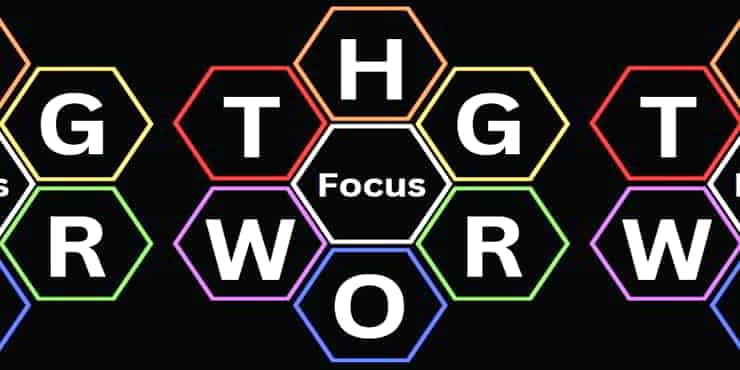
Estimated reading time: 16 Min
A process for achieving whatever you want and becoming the best version of yourself; The 6 steps to success is a blueprint for GROWTH and improvement.
The human GROWTH process starts with becoming very clear about what you want to achieve and why you want it.
Then you figure out how to get there, plan, take action, and review what works and what doesn’t so that improvements can be made.
Whether you want to be more successful with a personal goal, improve a skill, become whatever you consider to be the best version of yourself, or achieve any other aspiration, this 6-step process will help.
If you want to improve your business, your sports achievements, your daily life, or your personal growth, the six step GROWTH process is the only development tool you need.
How GROW Became G.R.O.W.T.H.
So, where did the G.R.O.W.T.H. process come from?
First there was the 4-step GROW Coaching Model, which I started using back in 1989. Sir John Whitmore (1937–2017) developed the GROW Model in collaboration with several colleagues during the 1980s.
The toolset worked superbly with business challenges, especially when people were stuck and looking for creative solutions to a challenge. I also used it successfully in various other settings, including sports, music, social, and the public sector.
I used the GROW model with individuals, and, in addition, it turned out to be invaluable, when adapted a little, for facilitating teams for planning and change workshops.
Before long, participant’s feedback led to the decision to split the fourth step into three parts…
6 Steps to Success
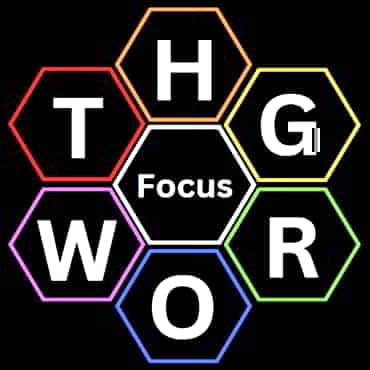
So the GROW Coaching Model evolved into what I have ever since called the G.R.O.W.T.H. Process.
In the mid-90s, a customer called the G.R.O.W.T.H. Process the “6-step blueprint to whatever I want.”
I’ve used the G.R.O.W.T.H. Process so much that it’s become a habit for any task of any size that I come across. For me, it’s become a G.R.O.W.T.H. habit, and I hope you find the process as useful as I have.
Key benefits are that it virtually eliminates procrastination and caters for all of Michael Jeffrey’s “8 Secrets to Success”!
As you already know by now, the human G.R.O.W.T.H. process consists of six steps:
- Step 1: Goal setting: set “smarter” goals.
- Step 2: Reality check: where are you now in relation to your goal?
- Step 3: Options: brainstorm, consider, and research the options you have.
- Step 4: Way forward: decision time. Create a plan.
- Step 5: Take action: execute the plan!
- Step 6: How did it go?: review progress and feedback for learning.
Here I go through the 6 steps in detail.
Step 1: “G” is for Goals
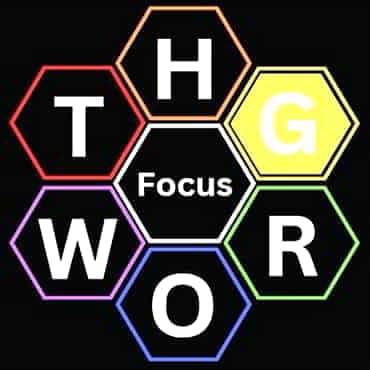
The first step to success asks:
“What do you want to achieve?”.
A simple question that benefits from a comprehensive answer.
Now, be warned; the first few steps may seem to be the hardest.
The thing is, they require a lot of thought, and thinking is the hardest and most energy-sapping activity we ever do.
So, in this step, you determine your outcome(s) or aspirations.
Big or small, it matters not. They require you to make decisions!
A few more useful questions…
Obviously, the bigger the aspirations (or the more complex they are), the longer this step will take.
However, for most desired outcomes, it will probably take between 10 and 40 minutes to figure them out. Unless you want to build a nuclear power station or start a new government or something, in which case it could take longer!
Also, bear in mind that this isn’t about design; it’s about a high-level vision of what you want.
However, the simpler starter question, “What do you want to achieve?” is often not answered in enough detail.
The more specific and detailed your answer is, the greater the probability that you’ll achieve what you want.
The following list of questions will likely provide all the details you need:
- Precisely what outcome do you want to achieve?
- How big or small is it?
- How much, many, or even just a few do you want?
- Who is involved?
- Is location important, and in which case where?
- Is timing important, and in which case, when do you want it?
- How will you know that you’ve achieved your outcome?
- What will you see, hear, and/or feel?
- What else does it get for you (or anyone else)?
- Last but not least, why do you want this outcome?
- And are there any negative effects? (If there are, you might want to make adjustments.)
Always write your required outcomes down, capturing the answers to the above questions in as much detail as is appropriate for the people involved.
The last but not least question above asks, “Why do you want whatever the outcome is?” Answering “why?” is powerful…
Also, here’s a sure-fire method to discover your whys!
Also, realise that nothing is set in stone here. There may well be additions, deletions, or adjustments to the outcome(s) as you progress through the six steps of the G.R.O.W.T.H. process. There is no right or wrong; only what works for you.
Create SMARTER Goals
Many people are already familiar with the concept of SMART goals or aspirations.
Sometime in the 1980s, I learned of the evolution of SMART into SMARTER:
- Specific: have you defined specifically, in enough detail, what you want to achieve?
- Measurable: are you able to describe how you will know when you’ve achieved your goal(s)?
- Achievability: Is what you want a realistic aspiration?
This is especially worth considering for short-term goals. Be careful with this one; just because you don`t know how to achieve something yet doesn’t make it unrealistic (and also, see “Risk Factors” below). - Resources: do you have or can you acquire whatever is needed?
- Time: are there any time constraints or targets? Are they specified and possible?
- Environment: as you move towards achieving your goal, who and what else is affected?
- Risk Factors: by definition, all growth is achieved outside of our comfort zone. If the goal requires a need for growth of some sort, is the necessary stretch clear, understood, and believable?
In consideration of all the answers to this list of questions, are any risks reasonable and manageable?
The questions asked above will have catered for “specific,” “measurable,” and any important “time” factors, as well as perhaps some of the “environment” and “resources” considerations.
This may leave “achievability” and “risk factors” to be clarified later, and there are possibly more “environment” factors and “resources” to be considered later in Step 3.
Before moving on to Step 2, ask: Just how compelling is your outcome? Do you truly know why you want it? Have you written down everything that’s relevant?
Always realise that nothing is set in stone here. The outcomes reflect your or your team`s inspiration alone. There may well be additions, deletions, or adjustments to the outcome(s) as you progress through the process. There is no right or wrong; only what works for you.
Step 2: “R” is for Reality Check
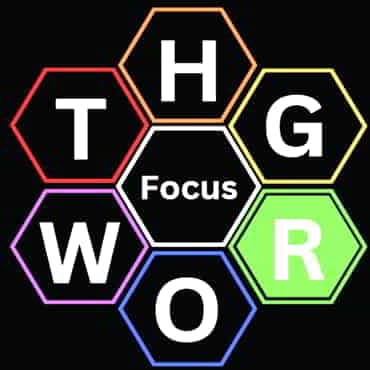
In Step 2, we ask, “What is your current reality?”.
Workshop participants have sometimes asked why this is not the first step.
The thing is that focusing on current reality first serves to limit our thinking in relation to our aspirations.
There are some situations, usually informal and with individuals, where it is best to go with the flow of whatever they want to explore first.
So on rare occasions, we go through step 2 before step 1.
However, achieving growth or change requires expanding or breaking through our comfort zone, and more often than not, focusing on our current reality first leads to creativity being limited to within the bounds of our current comfort zone.
So, whenever possible, going through Step 1 first leads to minimal interference from our experience of our current reality and tends to lead to greater creativity.
By first focusing on aspirations in Step 1, we are more likely to develop compelling and motivational outcomes that lead to a breakthrough.
Reality Check
So, the question is, concerning our goals and aspirations, where am I? Or where are we? right now.
Most importantly, this includes whatever resources are currently available.
Resources are not just money and things. They include attitudes (mindsets), knowledge, skills, strengths and weaknesses (areas for improvement and learning), etc.
Write it all down, then…
Examine the differences between where you are and where you want to be.
At this point, comparing your goals against current reality will clarify the distance or differences between these two points in time.
Now you can define what specific areas need to change and by how much.
If you’ve conscientiously followed steps 1 and 2, you’re now very clear about what you want to achieve and why, and you should have a good understanding of where you are already. The differences will help you understand the nature and size of any challenges.
Step 3: “O” is for Options
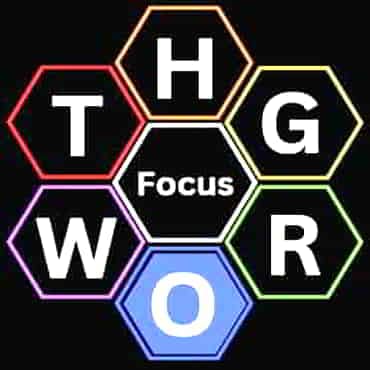
In Step 3, you figure out what options you have for achieving your goals. Focus on the steps that have to be taken to achieve what you want.
Position yourself at the end-goal and look back
Here`s an idea that I’ve often used. If you stand at the foot of a mountain that you intend to climb (or a small hill, for that matter) and look up, it is often difficult to pick out a path.
On the other hand, if you position yourself at the summit, it is often easier when looking down to pick out a route.
So, a little trick that you can use at this point is to position yourself as if at your goal. Imagine that you have now achieved your aspirations. Literally, in your mind’s eye, take a few minutes to experience your outcome; see, hear, and feel what you want to achieve, and then look back at where you came from (look back towards where you are right now).
Look back at the path to see what steps must have been taken and what obstacles were overcome on the way to the top.
Trust me, if you carry this out with conviction, you will relatively easily develop the strategies that got you (or will get you) to the top! You’ll have a much better idea of the milestones that you must reach and any obstacles to overcome on the way to the top.
Here is a simple method for creating a plan.
Brainstorm Options For Achieving Your Goals
In Step 2, you evaluated the differences between where you want to be and where you are now. Wherever you choose to position yourself, now brainstorm and consider what options you can think of to address the challenges identified.
Write down as many ideas as you can think of. Write down everything that anyone says, however whacky it might seem.
One whacky idea can lead to another, which can often lead to a practical solution.
Also, write it down, even if you have no idea how to get it done! Research often leads to unexpected outcomes.
Avoid evaluating options at this stage. Just write them all down and only ask questions for clarification where necessary. Criticism is not allowed!
Perhaps some of the options discovered will overcome any obstacles that you saw in the previous step. Perhaps some perceived obstacles are completely bypassed.
Once the brainstorming session is complete, I recommend taking a short break before moving on.
Note: The concept of ‘complete’ is based on the 80/20 principle. Once 80% or so of the ideas have been found, progress will slow down considerably. When the generation of ideas has stalled for more than a couple of minutes, it’s time to move on. More ideas may well appear over time and can be added when they are discovered.
Evaluate The Options
Having explored your options for achieving your goals, you now have a list of ideas. Some may well be completely impractical or inappropriate.
Examine each option, consider if it is useful or not and discard any that you have no interest in.
It’s important that people don’t take any implied criticism personally. Be sensitive to those involved and ask permission from the person who submitted an idea before removing it.
Flesh out each option a little where needed. Some may be simplistic and not need further clarification. Keep on writing everything down.
Perhaps some of the options can be combined in interesting ways.
Ask what resources (skills, training, tools, materials, finance, time, etc.) are needed for each option. As you think or discuss, make sure any new ideas are captured and considered appropriately.
Check to see if there are any new ideas, especially if the goal(s) have changed.
Step 4: “W” is for the Way Forward
In Step 4, you choose the way forward and the best steps to take.
It’s decision time…
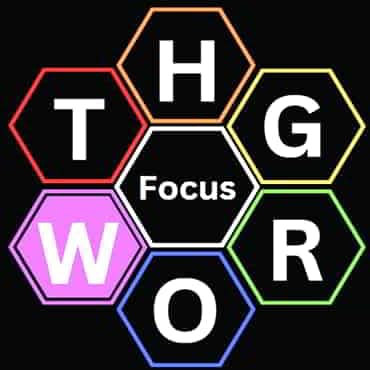
It’s worth checking that the written goals from Step 1 are still intact.
Given a better understanding of the options available to move towards your goals now?
Are the goals realistic and still exciting and motivating?
Do you want to change anything in the description of your aspirations?
Having refined a list of options in the previous step, for you to be able to move from where you are now to where you want to be, it’s time to decide which option(s) will deliver what you want in the most efficient way.
Do any of your preferred options require more resources? If so, think through how you will acquire the necessary additional resources.
Yes, it’s decision time!
Now get organised. It’s planning time, and then commit!
“Keep everything as simple as possible, but no simpler..”
Albert Einstein
A few thoughts on planning:
The concept that failing to plan is akin to planning to fail is not just a cliché! Some kind of plan, whether comprehensive or not, if followed, can make an enormous difference in achieving anything. The following points outline why planning works:
- Goal Setting
There are several different types of goals that can be considered. The most important thing is defining an outcome for your project. If you’re using this process, you’ve already clarified your goals. Planning then enables you to set achievable, clear, and measurable action-oriented goals. It’s like having signposts along your journey, giving you a sense of progress and accomplishment. - Clarity and Direction
Planning provides a roadmap. Be it in writing, business, or personal projects, it’s like setting a GPS before a journey; you know where you’re headed and can navigate through twists and turns with confidence. When you get lost, you can usually find your way again. - Resource Management
Time, energy, and money are finite resources. Effective planning helps in allocating these wisely, ensuring that you’re investing them in the most productive manner. - Anticipating Challenges
Planning can be thought of as a rehearsal before the main act. It helps you foresee potential challenges and devise strategies to overcome them. - Efficiency and Productivity
With a plan, you avoid the pitfall of aimlessly wandering through tasks. It’s about doing the right thing, in the right way, at the right time, deliberately. - Flexibility and Adaptability
The most important thing to understand is that, contrary to popular belief, planning doesn’t stop flexibility. It actually prepares you to adapt to changes more effectively. You’re not just following a map blindly; you’re equipped to find alternative routes when needed. Just like with a GPS, it’s the driver’s responsibility to avoid impassable tracks! - Stress Reduction
Planning acts as a stress buster. Knowing what needs to be done, how, and when can significantly reduce the anxiety of uncertainty. - Enhanced Creativity
With the structural framework in place, there’s more freedom for creative thinking. It’s like having a tidy workspace; with everything in its place, there’s more room to think and create.
In a nutshell, planning is less about restricting freedom and more about empowering your thinking with insight and foresight. It’s an art of balancing foresight with adaptability, ensuring a smoother, more enjoyable, and more successful path towards your goals.
How to create your plan
Albert Einstein, in relation to scientific experiments, famously said, “Keep everything as simple as possible, but no simpler.” I think this can equally be applied to planning.
Keep your plan as simple as you can, and make sure it’s comprehensive while avoiding overzealous time constraints.
Sort your chosen options into a logical order, making sure that those dependent on others are placed appropriately. For clarity, some options may need to be further expanded.
In my opinion, no plan is complete without priorities being considered. Without priorities, it’s just a list of objectives, not a plan.
But when it comes to target dates, in many cases, dates can be flexible. Unless there are critical dates (see below), do not get too hung up on them.
Where there are critical dates, perhaps based on external influences or due to other commitments, be clear on what they are. Make sure all those who need to know understand what is critical and why.
Also, be realistic with time estimates. Personally, I usually add 50% to my original estimate.
Now, as Yoda might have said about decisions, “Commit or don’t commit; there is no maybe!”
Remember to include criteria for measuring results. Write down a description of how you will know when each item on the plan is complete, and commit to the outcome! So by now, you’ve defined three types of goals.
In addition, if the plan is going to take more than a short time (perhaps more than one month), then it is worth including regular progress reviews in the plan (see Step 6).
Step 5: “T” is for Take Action
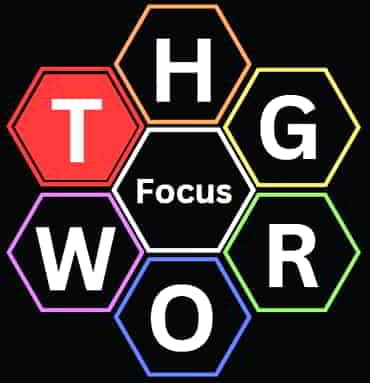
So far, most of the work has been cerebral.
Now it`s time to take action by implementing the plan developed and committed to in Step 4.
Probably the simplest instruction and yet the most critical step.
If no action is taken, nothing will be achieved, so…
Just do it!
This is where discipline comes into its own. Especially if you are working on your own.
Daily disciplined activity is essential to making sure you follow the plan.
It´s useful to invest a few minutes at the end of each day to check progress against the plan, and become clear on what you will do the next day.
Also, it is a good practise to regularly remind yourself why you want to achieve your aspirations.
If you find yourself regularly falling behind, avoid beating yourself up; ask yourself, “What’s getting in the way of progress?”.
Just be honest and change what you can to improve.
Above all, during the time allocated for taking action on your plan, stop doing things that are not productive.
Make no bones about it; if you’re not getting things done, you will have to take the pain of changing something (perhaps behaviours) in order to make progress.
You’ll not regret the discipline! It’ll feel great when you achieve what you want.
It’s also likely that you will, on occasion, find yourself off-plan…
The art of balancing foresight with adaptability
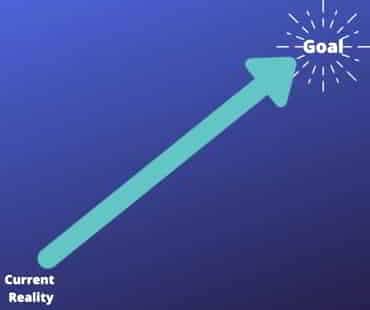
The Original Plan
There’s not much that can be said about this!
The perfect plan looks like this:
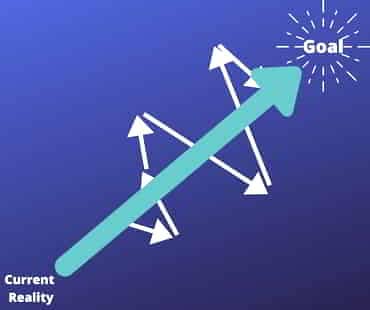
Here’s What Actually Happened
The white arrows show what typically happens!
Most people try to get back to the original plan, indicated by the white arrows.
Notice that when added together, the white arrows are at least twice as long (i.e., they take twice as long) as the original plan.
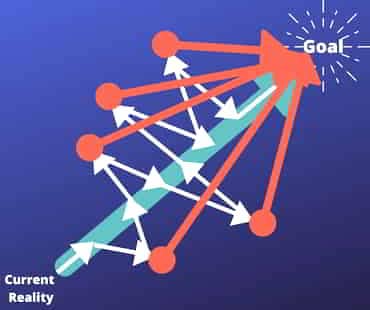
Opportunities For Efficiency
In this hypothetical example, there were at least five opportunities to re-plan from a new position. The red arrows show the fastest route to reach the goal.
This may look a little exaggerated, but I hope it makes the point.
This is the art of balancing foresight with adaptability.
Step 6: “H” is for How Did It Go?
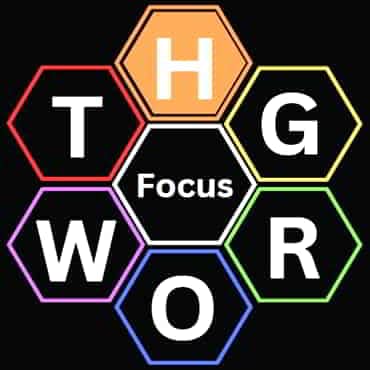
In Step 6, it is time to review achievements and answer the general question:
“How did it go”?
A warning: it may be tempting to ignore this step, especially if you’ve fully achieved what you wanted or if the project is a `one-off`.
I recommend asking the key questions below.
There are always learning points.
In addition, if your aspirations are going to take some time, perhaps due to complexity, you may benefit from adding periodic reviews to your action plan at Step 4.
The same key questions are useful for any feedback review.
It is, of course, important to review progress towards the goal(s).
Are there any things you would do differently next time?
Key Questions For Feedback

When you review achievements, it’s not just to check progress against the plan. It’s for discovering any areas for improvement so that they can be implemented in the future.
That includes the overall process.
Ask the following questions:
- What worked?
- What didn`t work?
- What did I or we learn?
- What can I or we do differently next time?
Applying the learnings from the answers to these four questions will lead to continuous improvement.
FAQs
-
Why is the word “focus” in the centre of the G.R.O.W.T.H. image?
It’s great that you noticed!
The G.R.O.W.T.H. process works best when people focus on one step at a time. Subject matter does come up that’s not directly relevant to the current step. When this happens, it’s usually best to write it down and save the thought for later discussion. There are no hard-and-fast rules. Re-visiting steps and adding to them is a normal activity when necessary, so long as any effects are carried through to later steps. -
What are the differences between goals, required outcomes, and aspirations?
In Step 1 of the G.R.O.W.T.H. Process, the terms “goals,” “required outcomes,” and “aspirations” all mean roughly the same thing. They all reflect desired outcomes. In this context, they’re largely interchangeable. They all represent whatever it is that an individual or group of people want to achieve.
However, during the planning stage (Step 4), you’ll be defining two other types of goals: action and measurement goals.
Summary
I encourage you to try out the G.R.O.W.T.H. Process, the 6-step blueprint to success; you might like it, and if you apply it consistently and persistently, you’ll generate a set of good habits that will lead to a successful life.
You’ll find yourself more often in a state of flow, in the present moment, and on your way to becoming the best version of yourself!
Let me know how you get on …
If you have any questions, please reach out, add a comment, or use the contact form.
If you think others might like it, please share.
Richard B







This is something I absolutely must do. I can see that it takes time to make this blueprint, but it is important to achieve all my goals. I have several goals, and I may not have expressed them all very clearly in my mind to start or continue the process of achieving them. As you mentioned in this post, we should be clear about what we want to achieve.
I love the arrows in the pics, they clearly show how it can go and they make me feel less bad about straying from the path sometimes. We’re only human, right? The wonderful thing is, though, that all straying arrows get back to the main arrow and eventually reach the goal, which means that persistance and hard work pays off.
I’ll do this blueprint. How much time do you think I should set aside to create this blueprint for my goals?
Hi Christine. Thank you for reading about the GROWTH Process and telling me what you think. I’m glad you found it interesting and hope. more importantly, that you apply it and find it useful. To me, it’s become a habit over the years. Whenever I, or anyone else I am with, has a challenge I automatically run through the process, asking appropriate questions to help myself or the other person/people to be clear at each step.
You ask how much time to allow. There are two points to make.
1. the first few times you use it, it will take more time than later. With familiarity, you can get through faster. If you go through the process on your own I would encourage you to ‘practice’ the process with something that you consider to be simple, the first time around. Perhaps a mundane everyday ‘project’ like going to the shops.
2. If I was coaching someone face to face I would normally schedule a 2-hour slot (not for planning to go to the shops!). How long it actually takes would depend on the complexity of the required outcome and the necessary steps to achieve it. With an individual, with guidance, it usually takes between one and four hours.
Please let me know how it goes. Thank you… Richard
Hello Richard, Thank you so much for this interesting article. It has helped me a lot to go back to basic and start over again. I have studied your six steps to success and will work on this. I am more clearer now. I have Set up a list where I have put all my, our goals and found out that I am still on the right track. I just was a bit confused. We have set up so many different things over the last years.
We have made seven sculptures.
Seven songs, three are released. The other four will be released this year.
Gerhard is producing a classic piece called Challenging Beethoven, which will be released, after making the video clip. And last but not least, I started a website in 2020, where I try to help other women to dare to dream big and get slender and healthy at the same time. As you can read, we have made all the resources. The main thing is the time issue. To promote all of this costs a lot of time. What stressed and gets me under pressure the most is time. Do you know how I can set up a proper time management, so that I can be more focused?
Thank you again Richard for your great help.
Monique
Hi Monique
Thank you for reaching out and discussing your situation. I am very pleased that the Human GROWTH Habit (as I call it) is useful to you. I can give you some clues about time management (an expression that you will find I don’t use myself) … here is an article I wrote recently on this: https://ldcmindset.com/illusion-of-time-management
I hope it helps. Just get back to me with any follow up questions.
Best wishes
Richard